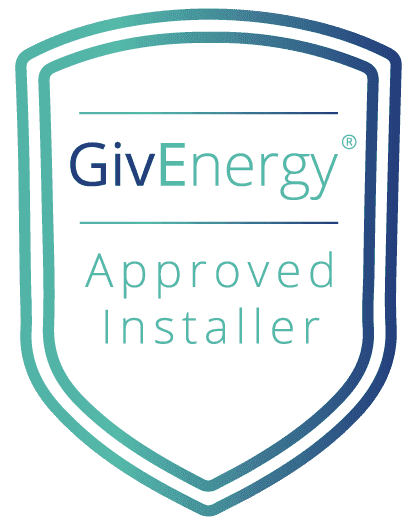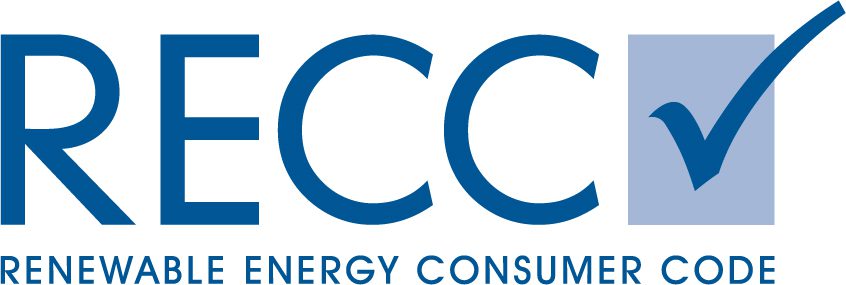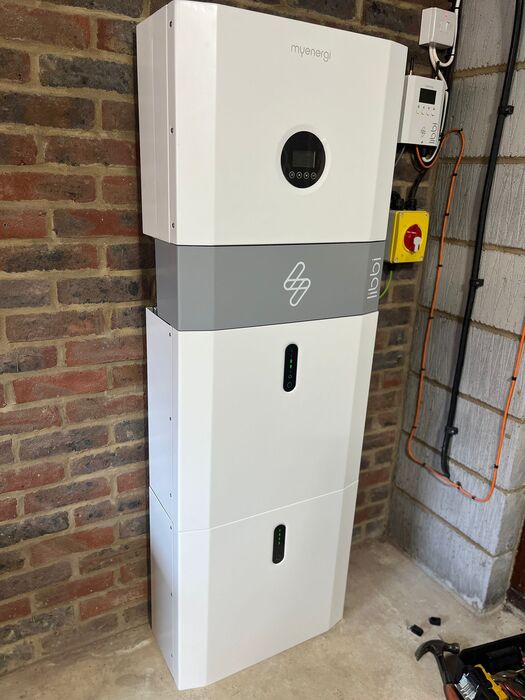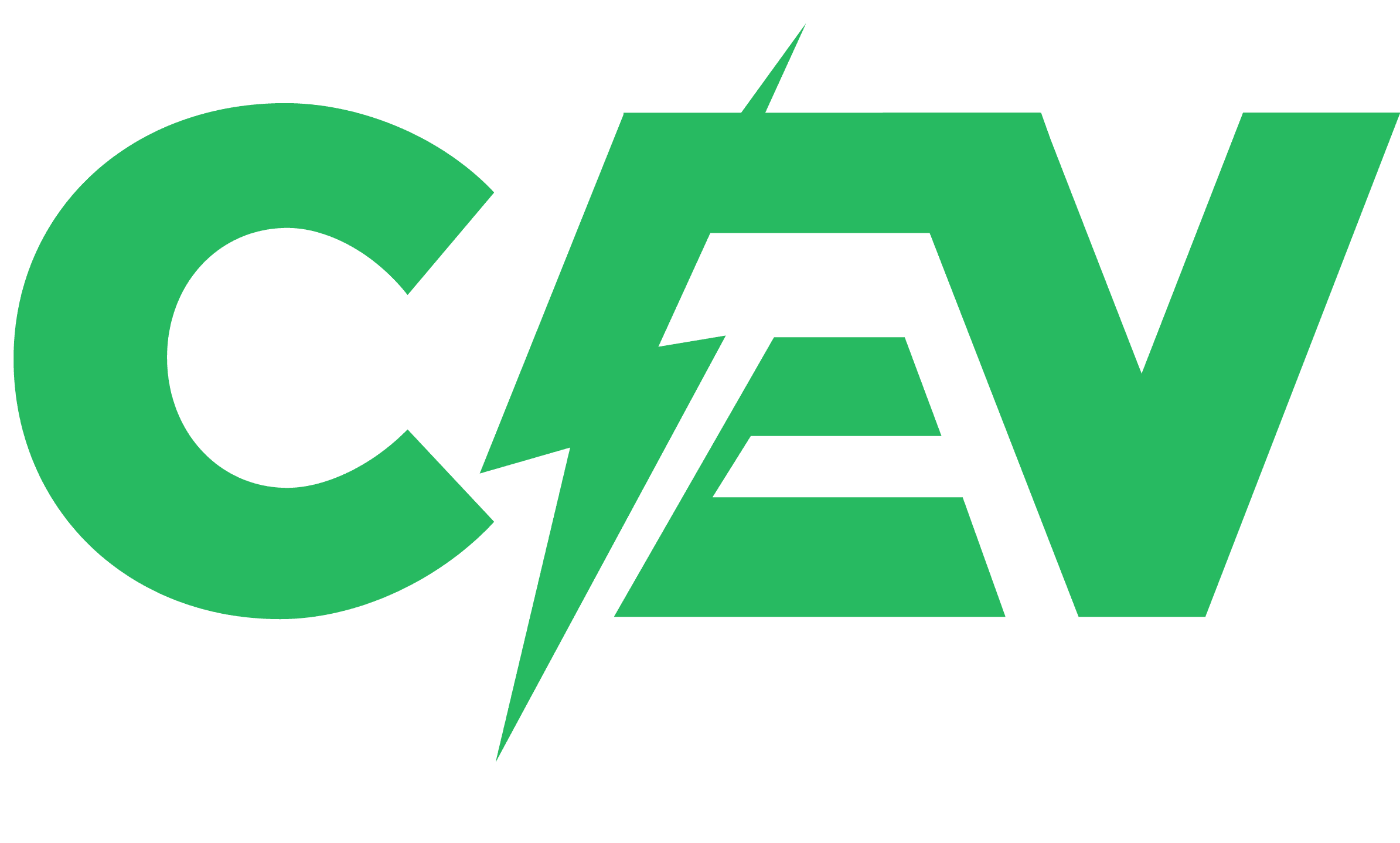SOLAR BATTERY STORAGE








How Does A Solar Battery Work?
Solar battery storage systems enable you to store the electrical energy your system produces and to use at a later time either when you require it or it is more economically advantageous. This allows you to choose how and when to use it so you can choose to maximize your savings against a peak rate tariff using either stored or off-peak power or to maximize the price you’re paid for export.
For example; you can choose to charge your battery when you generate excess power during the day and then sell it later during the evening peak tariff period for a higher price. Conversely you can choose to fill your battery during an off-peak tariff time and use it during an on peak tariff time reducing your import costs. These differences in price add up over time and produce large savings as well as making your use more energy efficient and reducing carbon. For an in depth explanation on how a home battery storage system works, check out our blog.
We offer systems with both our PV panel installation services and we design and install storage systems which can be added to existing PV panels or installed as a stand alone solution.
Our designers can provide all the information and advice you need to help you choose the best system for you based on your individual requirements.

What size solar battery capacity do you need?
Top 5 factors when deciding how much battery capacity you need.
- How large your PV array is, if you have a small array (4-8 panels) the average is a 3-5kwh system. A medium sized array (10-12 panels) the average is a 5-10 kwh system. If you have a large array (12-20 panels) the average is a 10-20kwh system. All these averages do not account for your personal circumstances, our designers will custom size a system for you based on your individual requirements.
- Do you have an off-peak electricity tariff? If you have access to a cheaper night time rate you can set the system to charge during the low cost period and to use the stored energy through either the day or specifically any peak tariff periods. This is called tariff arbitrage where you offset the more expensive electricity during peak times with the cheaper low cost electricity and make substantial savings from doing so each day. Some tariffs even allow you to export to the grid at the market rate during peak hours. We can assist in calculating your most economic options as these calculations can start to become more complex the more different rates and times there are available. If you don’t have a suitable tariff this is the time to review them and decide on the best options.
- The size of your budget. No one has an endless budget and the more you add, the more expensive your system will be. We can design a system which is cost effective, saves you money, and future proofs you so that if you ever wanted to add to your system at a later date, you can do so with minimal additional cost. Contrary to this the more capacity in a system the more savings it can make or the more energy it can export so there is a balancing act that we can again advise on.
- How often you experience power cuts. Some areas throughout the UK experience more power outages than others as the national grid may struggle with maintenance issues, overloading, remote locations and various other factors. If you are in an area which experiences regular power cuts or you have critical systems that you don’t want offline then you may want to consider using a backup system which can power your home from its storage.
- What is your annual consumption of electricity? If you are looking to offset most of your energy usage throughout the year using your PV system and tariff arbitrage then you will need to know how much electricity you use in a year. The less electricity you use the smaller system you would need but the less capacity this gives you for export, we can advise on a balance that suits you. It also depends on when you use electricity. For example, if you aren’t home between 9am and 5pm then your array is producing electricity all day your home will only consume a small amount of electricity. It would make sense to get a larger battery so that you can store the energy produced and use it later when you return home which is also potentially a peak rate time which costs substantially more per Kwh.
Can you add a battery to an existing system?
Yes you can. We can add a battery to an existing solar panel system using an AC coupled inverter which inverts the power sent to the battery from the supply to DC suitable for use in the storage system. You can link an AC coupled inverter to either a grid tie or string inverter from existing arrays or to the main house supply for use as a standalone system. It provides a cost effective way of upgrading an existing system or adding stand alone storage with no array where panels are impractical.
In most systems we fit an additional inverter in certain circumstances we can change the original inverter to either a hybrid model but normally the simplest and most cost effective solution is to run a stand alone system. Most systems include a gateway element that allows you to control and prioritise the use of the electrical power, we would recommend a solution that includes this. typically you can control these from an App on your smartphone or via WIFI through an online portal. These also allow you to keep track of energy usage and generation.
How much does a solar battery cost?
If we’re installing your PV array, we can add a storage system with a capacity of 5kwh’s to your installation from only £4000.00. We have various packages available ranging from 5kwh – 10kwh capacity systems and for large properties can supply both custom capacity models and daisy chain units to provide significant storage capacities of up to 135kw using products such as Tesla’s Powerwall.
Remember if you add the battery at the same time as the PV panels they are VAT free currently which saves you further money.
If you would like to discuss any aspect of storage further click the button below and one of our designers will call you back when suitable for yourself for a no obligation and free discussion and quote.
Top 10 Benefits Of A Home Battery Storage System
- A system will optimize your existing system by storing energy you have generated disconnecting the time of generation from the time of use.
- Allow you to maximize your export at peak times for maximum returns
- Allow you to minimize your import at peak times to minimize costs
- Are currently VAT Exempt saving 20% when you install with a V system.
- Increasing your energy independence. By importing less and being able to choose when to import you protect yourself from future price increases and peak rate tariffs.
- Reduce your carbon footprint by importing less electricity and making your home more energy efficient.
- Providing you Backup Power in the event of a grid power cut or outage or backing up your critical systems or accessories at a time you need it most. A system can provide power to either your whole home or critical circuits and can be sized to accommodate your needs if there is a power cut. Check out our blog on the options available.
- Increase the value of your house both now and in the future.
- Increase Your Savings. Compared to PV panels alone by reducing and allowing you to manage and programme your energy usage during peak times and to maximize your potential to export at peak rates.
- Where you are unable to have panels or enough panels to meet your demand it will allow you to import power at off-peak rates to use at either peak or standard rates saving you the difference in cost.
Which manufacturers do we use?

Can I use my solar battery during a power cut?
Running your home on battery power during a power cut might seem simple, but it comes with important considerations. The primary concern should always be is safety compliance, this is prevent you and your family, anyone working on the system or anyone working on the grid being at risk of or subject to electric shocks. These specific risks occur during power cuts as the grid supply relies on its neutral conductor as part of the return earth path and if this has also been cut during the fault which caused the power cut such as a tree falling on a line then effectively the system has no earth protection and people are exposed to the potential for electric shocks. PV systems are designed to shut down during power outages for this reason so they do not feed any power back into the grid.
Specifically designed back up systems such as Tesla’s Powerwall or Givenergy’s ALL In One are used with specific gateway units which have a mode called islanding where the system will run independently as its own island and not feed power back to the grid. The systems include a specific set of relays that automatically sense and switch supplies and settings to ensure your safety at all times, in the case of these units they switch within 20ms.
Proper placement of the gateway units are vital—it should sit between your incoming power supply and your primary fusebox or consumer unit.
The “islanding” will require the installation of an additional stand alone earth rod to provide the safe earthing requirements for the system.
What types of home backup are there?
There are three types of home backup
- Emergency Power Socket (EPS)
- Critical Load Backup (EPS Circuits)
- Whole home Backup
Emergency Power Socket
An emergency Power Socket is an electrical circuit that comprises of a single or double socket and is wired into your inverter which has a EPS supply. This is at relatively low cost depending on the system but only provides a basic low power supply.
In the event of a power cut, the inverter will recognize the grid outage, and the Automatic Changeover Switch which is built into the inverter will send power to the EPS socket. You can then use the EPS socket to power electrical appliances such as phone chargers, WIFI, a fridge, lamps etc.
It is worth noting that if you intend to use a back up system to ensure it has available power you will have to set a power reserve on the battery so that in the event of a power cut you will still have battery storage available to use. You can do this by setting a charge limit on the inverter in app settings.
Critical load backup
Critical load backup is when you have connected multiple existing circuits from your fuse box or consumer unit to the inverters backup supply port.
This means that in the event of a power cut you will still have power to provide the selected circuits. typically we find this useful for people who need to ensure items such as a network doesn’t go down or a fridge or freezer can be kept cold.
Most inverters are only able to offer a EPS supply capability of 10-20a and your installer should take this into account when advising which circuits you can supply during a power cut. Critical load backup is not available on all inverters and you should always refer to manufacturers guidance. We recommend that you only consider lighting circuits and power circuits which have low powered electrical appliances connected to them.
Whole Home Backup
Whole home backup is when you use the stored power to power your whole home during a power cut as if there is no change to the supply. The system switches itself in and out and there are less limits on the power that can be used. it is worth noting even the larger systems still limit the available power to less than a normal load.
There are a limited amount of inverters which are capable of offering this. CEV recommends that you opt for the Tesla Powerwall or Givenergy solutions.
To install Whole Home Backup you will need to have what’s called a “Gateway” installed. The Gateway is installed between your incoming supply and consumer unit. The Tesla Powerwall is able to supply your home with 5kwh’s of continuous power in the event of a power cut, the Givenergy unit up to 6kw.
See our Blog comparing the two units and their performance.
Your Iocal solar battery storage installers
These systems have become increasingly popular for residents looking to reduce their environmental impact by saving Co2 while also saving money.
Not only is such technology capable of reducing energy bills and increasing property value, but it can also be an excellent renewable power source when used with grid-based electricity sources.
With the help of our high-quality design services and using the fully warrantied and guarantied products we use, our customers can benefit from a well-designed system that is reliable and efficient over time providing class leading ROI and low pay back periods. Additionally, our team at CEV Ltd can offer competitive rates and ongoing maintenance programs to ensure the best performance year after year.
For more information on any aspect of these systems or for general enquiries please, contact CEV Ltd today!
Frequently Asked Questions
The two best home battery storage systems which have a whole home backup feature is the Give Energy All In One and the Tesla Powerwall. Both battery systems have a 13.5kwh storage capacity and a backup output of 5kwh’s. They are wired in a similar way, take up a identical amount of space and can be installed outside.
